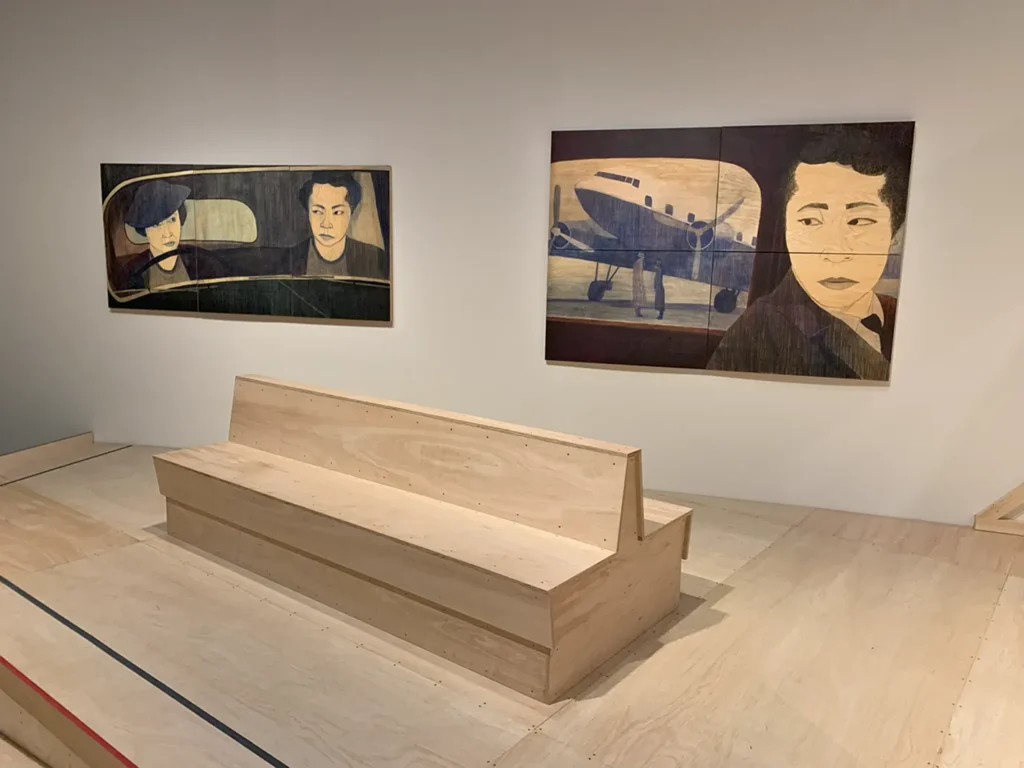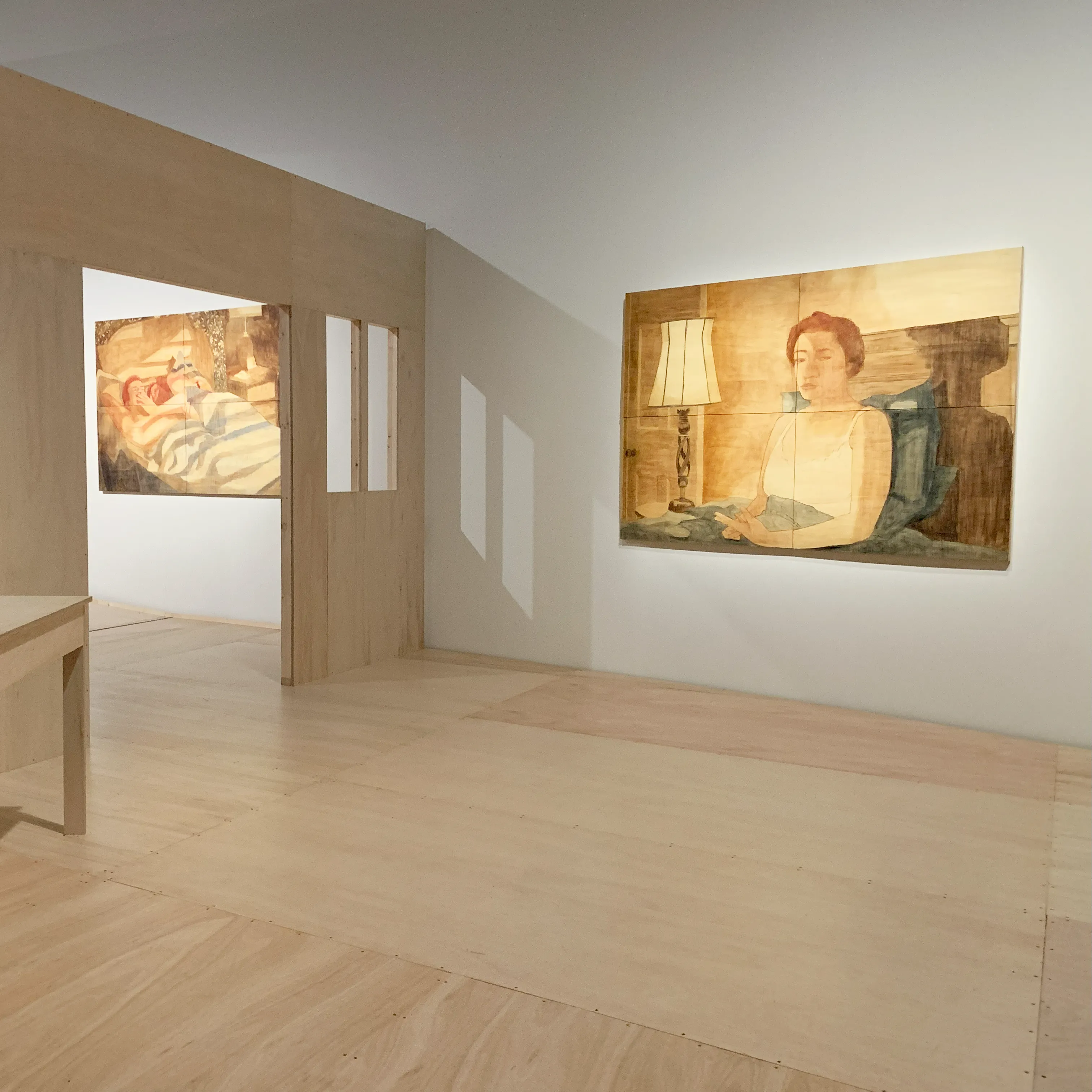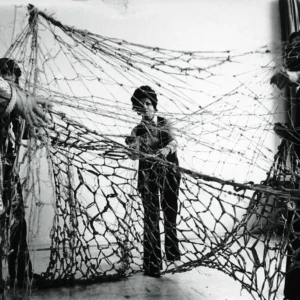It Will End in Tears at the Barbican presents a hauntingly immersive journey framed by minimalist “film sets” reminiscent of noir cinema. With influences from Hitchcock to Bessie Head, Pamela Phatsimo Sunstrum’s visual storytelling delves into the complexities of identity, colonial legacies, and self-determination.
Collaborating with set designer Remco Osório Lobato, Sunstrum creates minimalist, skeletal film sets with life-size wood grain panoramas, mimicking domestic and official spaces of a mid-20th-century colonial outpost. These sets guide viewers through themes of migration, belonging, freedom, and identity.
The exhibition centers on Bettina, a character inspired by South African writer Bessie Head, who returns from life abroad to a fictional colonial outpost in Botswana. Her stylish arrival, in a fur coat and heels, hints at an ominous, transformative journey.
Sunstrum uses Bettina’s character to question and critique the misogynistic underpinnings of the femme fatale trope common in Hitchcock’s film noir, portraying her evolution from restricted domestic roles to a complex, empowered—yet dangerous—figure.
In early scenes, Bettina appears performing household chores, her expression hardening into a mask as she conforms to societal expectations. A background figure, a man in a shirt and tie, adds tension to these scenes, reflecting the oppressive environment Bettina faces.
Through constructed “windows” and mirrored doubles, Sunstrum portrays Bettina’s split psyche, symbolizing her inner conflict between the past and a desire for freedom. The voyeuristic “windows” invite viewers to intrude on Bettina’s private moments, heightening the sense of her confinement and gradual psychological unraveling.

As Bettina’s character evolves, she adopts the femme fatale role, blending tenderness with calculated detachment to seduce a man. In a key scene, she steps into a doorway with a knife in hand, foreshadowing her psychological descent. Lighting a cigarette for him symbolizes both resistance and threat, marking her shift to a darker, empowered identity.
For It Will End in Tears, Sunstrum took a structured, cinematic approach, preparing over sixty sketches, which she refined to nineteen final paintings, for the first time approaching her work like a filmmaker storyboarding scenes.
The exhibition meditates on identity and belonging, particularly for those within the African Diaspora navigating multiple cultural worlds. Through skeletal sets and penciled paintings, Sunstrum exposes the artifice of domesticity and femininity, urging reflection on constructed roles for women. Bettina’s ambiguous, dark evolution underscores the complexities of self-determination, inviting viewers to question freedom and empowerment.





